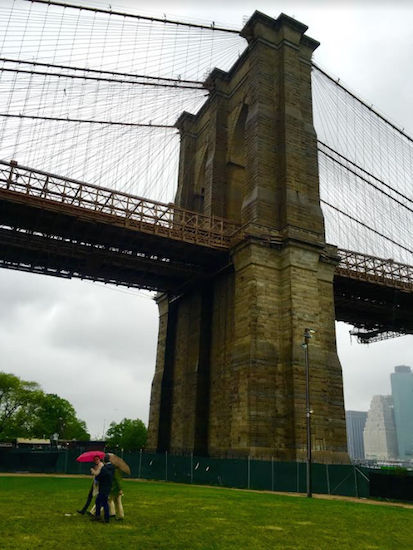Endless possibilities for last undeveloped piece of Brooklyn Bridge Park
Ice skating? Mulled wine? A winter petting zoo?

The last undeveloped piece of Brooklyn Bridge Park is situated beneath the Brooklyn Bridge. Eagle photo by Lore Croghan
Call it Emily’s Esplanade.
Or Emily’s Garden.
Residents of DUMBO and Fulton Ferry Landing say the last undeveloped site in Brooklyn Bridge Park should be named to honor Emily Roebling.
